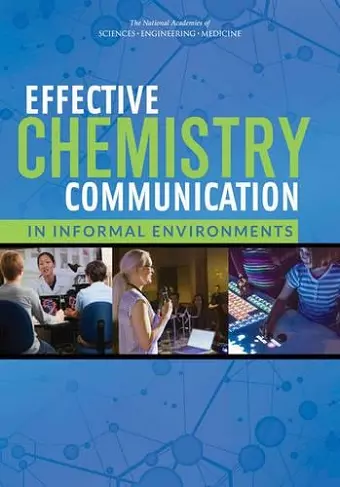Effective Chemistry Communication in Informal Environments
Division on Earth and Life Studies author Division of Behavioral and Social Sciences and Education author Board on Chemical Sciences and Technology author Board on Science Education author National Academies of Sciences, Engineering, and Medicine author Committee On Communicating Chemistry In Informal Settings author
Format:Paperback
Publisher:National Academies Press
Published:19th Sep '16
Currently unavailable, and unfortunately no date known when it will be back

Chemistry plays a critical role in daily life, impacting areas such as medicine and health, consumer products, energy production, the ecosystem, and many other areas. Communicating about chemistry in informal environments has the potential to raise public interest and understanding of chemistry around the world. However, the chemistry community lacks a cohesive, evidence-based guide for designing effective communication activities. This report is organized into two sections. Part A: The Evidence Base for Enhanced Communication summarizes evidence from communications, informal learning, and chemistry education on effective practices to communicate with and engage publics outside of the classroom; presents a framework for the design of chemistry communication activities; and identifies key areas for future research. Part B: Communicating Chemistry: A Framework for Sharing Science is a practical guide intended for any chemists to use in the design, implementation, and evaluation of their public communication efforts.
Table of Contents- Front Matter
- Summary
- Part A: THE EVIDENCE BASE FOR ENHANCED COMMUNICATION
- 1 Introduction
- 2 Why Chemists Engage in Communication
- 3 The Current State of Chemistry Communication
- 4 Evidence-Based Research on Learning and Communication
- 5 Evaluation to Refine Goals and Demonstrate Effectiveness
- 6 Communicating Chemistry: A Design Framework and Research Agenda
- Part B: COMMUNICATING CHEMISTRY: A FRAMEWORK FOR SHARING SCIENCE
- APPENDIXES
- Appendix A: Data Collection Instruments
- Appendix B: Committee Member Biographies <
ISBN: 9780309377522
Dimensions: unknown
Weight: unknown
168 pages